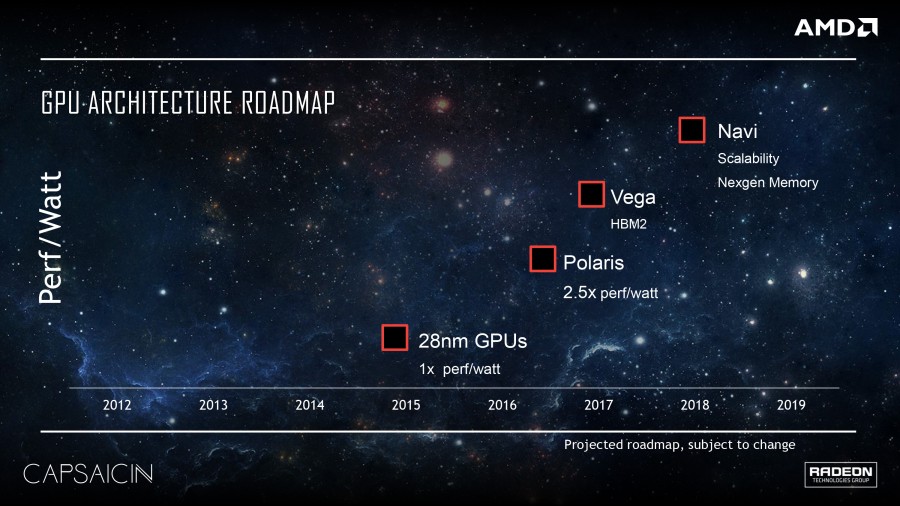renz496
Champion
cdrkf :
17seconds :
Polaris was intended to be a full generation of its own and compete on the high-end enthusiast segment. Problems with production quality and Nvidia's surprising performance led them to re-brand these as mid-range only cards.


That road map doesn't state anything about market segment- and that argument doesn't hold water when you considder:
AMD knew the specifications of the Polaris 10 gpu when they created it- and it is a less powerful gpu (by any measure) than their existing Hawaii and Fiji silicone.
The argument 'they dropped it to mid range due to nVidia' is nonsense because the card is mid range against their own existing product stack.What you are describing is them creating a massive, high core count chip like Fiji, and marketing THAT as a 'x80' part due to a performance problem. That just isn't what happened here- Polaris 10 is a small, mid range part (it happens to be the exact same size as Pitcarin). There is no way ANYONE at AMD expected it to go in any higher of a market segment than it did based on those specifications. The only potential change nVidia might have forced is they dropped the price of it slightly- I'd have guessed they would have preferred to sell it at $250 instead of $200 for the base model.
sometimes i was thinking AMD probably will not going to release anything faster than Fury X in 2016. this year AMD product stack probably like this:
ultra high end: pro duo
high end: Fury series
midrange: polaris 10 (replacing hawaii)
low end: polaris 11 (replacing all older GCN in this performance segment)
right now we have no solid info on Vega. if AMD really banking on HBM2 for Vega we most likely won't see Vega this year.

